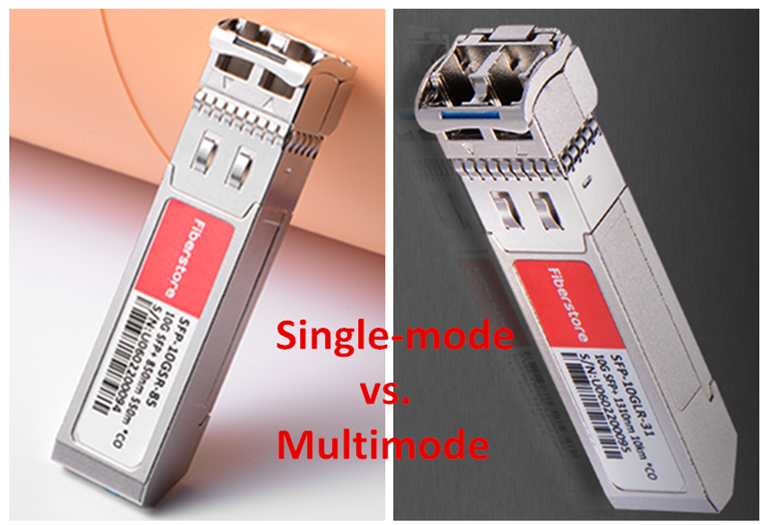As for data transmission in optical networks, fiber optic transceiver is an indispensable part used for sending and receiving electrical and optical signals between facilities like computers, input/output devices, peripheral devices or switches. According to different transceiver models, optical modules can be divided into single-mode fiber optic transceivers and multimode fiber optic transceivers. Each type has its own different characteristics. You need to know their differences so as to choose the most suitable type. To understand them better, this post will present their brief introduction and major differences.
What Is Single-mode & Multimode Fiber Optic Transceivers?
A single-mode fiber transceiver is a type of optical transceiver module, which is a self-contained component that can receive and transmit data using single-mode optical fiber cables. It permits the transmission of signals at the very extreme high bandwidths thus facilitating the transmission of signals at very long distances. A multimode fiber optic transceiver works with multimode fiber. It permits the use of inexpensive LED light sources and alignment of the connectors with a coupling that is less critical than that of the single-mode fiber. The transmission distance of multimode fiber optic transceiver is less than that of the single-mode transceiver due to dispersion.

What Are Their Differences?
The major differences between single-mode and multimode fiber optic transceivers are listed below.
Transmitting Rates and Range—Both the single-mode and multimode fiber optic transceiver can handle the 10G speeds. However, distance requirements are quite critical. The multimode optical transceivers generally have a reach of approximately 550 meters, while the single-mode transceivers can get you through 10 km, 40 km, 80 km and even farther.
Price—The optics used in the single-mode fiber are twice those used in the multimode fiber. But when installed as part of a project, the extra cost of single-mode fiber is negligible compared to multimode fiber. The fragility and increased cost to produce single-mode fiber makes it more expensive to use.
Compatibility—When it comes to issues dealing with compatibility, the two types of transceivers are not compatible. You cannot mix the multimode and the single-mode fiber between any two endpoints.
Power Dissipation—Multimode transceivers consume less power than single-mode transceivers, which is an important consideration especially when assessing the cost of powering and cooling a data center.
What Should Be Noticed When Using Them?
When using the fiber optic transceivers, the tips below should be followed.
- Ensure that in the single-mode transceivers, both ends of the fiber patch cord are of the same wavelength. The color for the used modules must be all consistent.
- In order to ensure and facilitate the data accuracy, short wave modules are used with the multimode transceivers while long wave modules are used with the single-mode transceivers.
- Do not wind or overbend the fiber optic cables when using them. This is because doing so will attenuate the light in transit.
Conclusion
From this article, we can know that single-mode and multimode fiber optic transceivers are used for different applications. Single-mode optical transceiver is typically used for high speed data transmission over long distances. But multimode optical transceivers are made for short fiber optic links. Our website provides fiber optic transceivers with different data rates such as 10G transceivers, 40G transceivers, 100G transceivers, etc. supporting both single-mode and multimode transmission. All of them are tested on the corresponding equipment to ensure their performance and stability.
没有评论:
发表评论